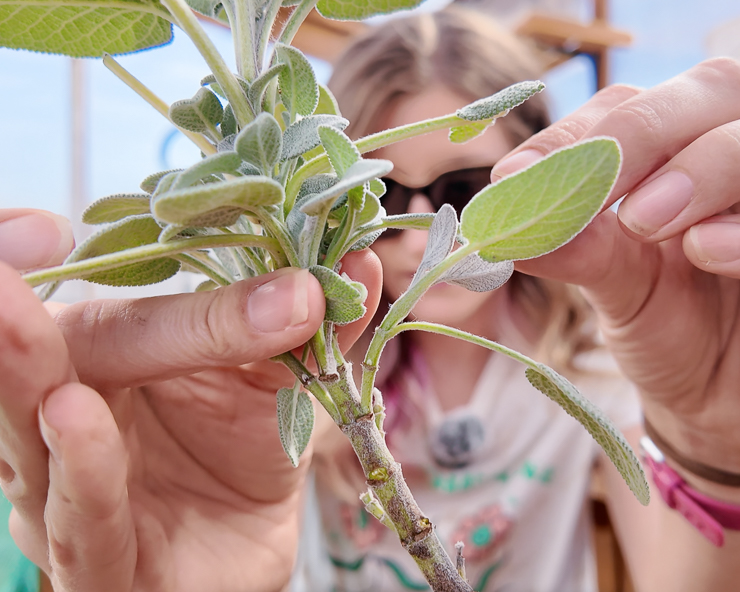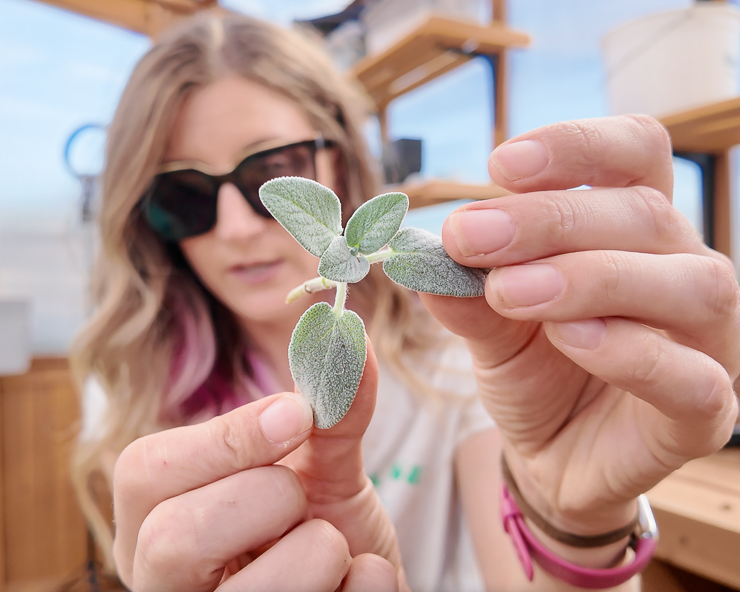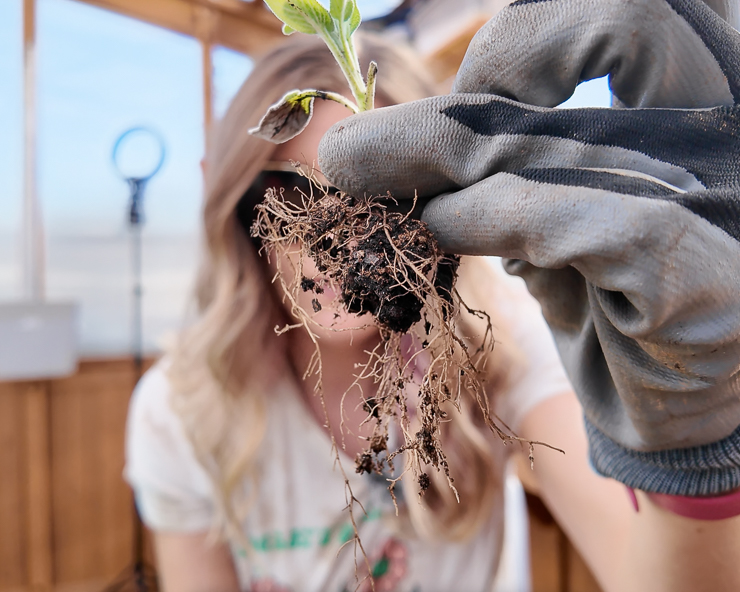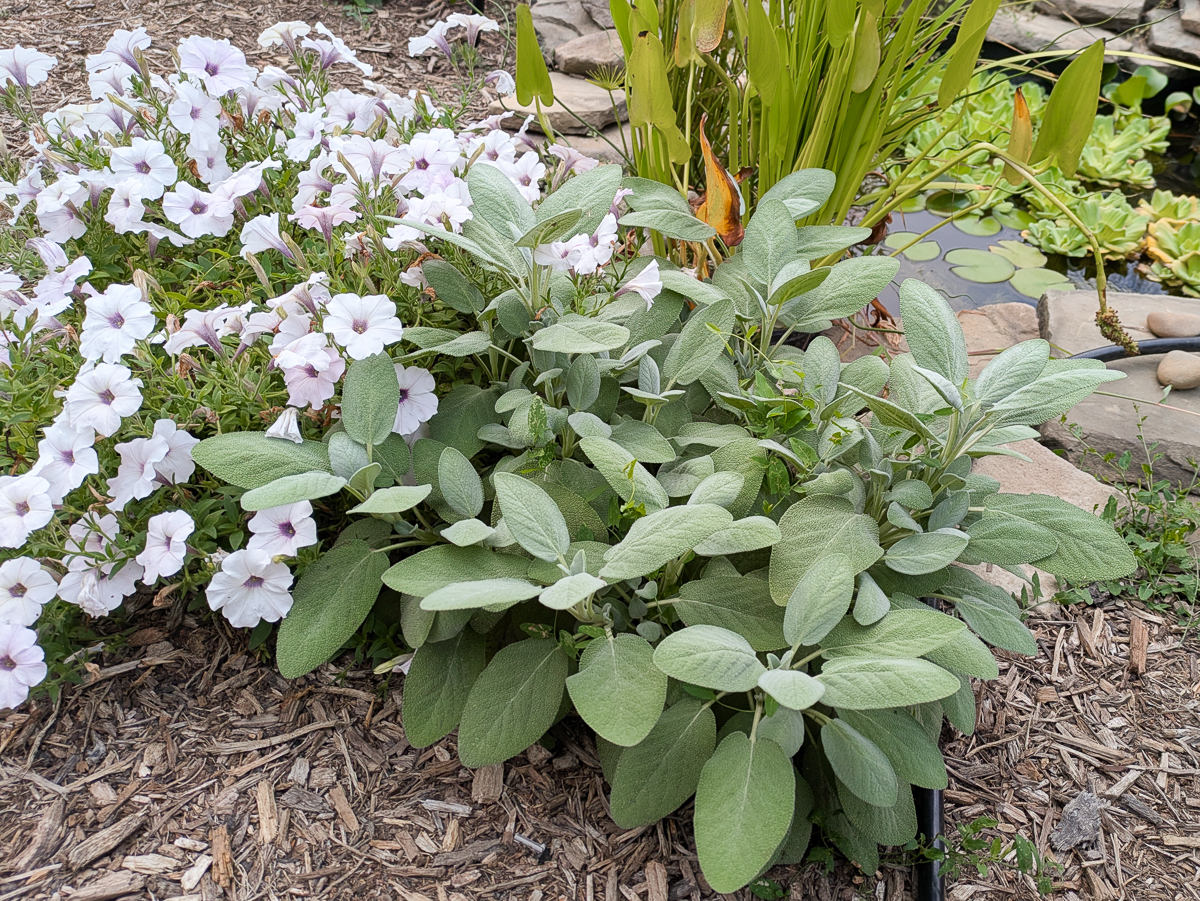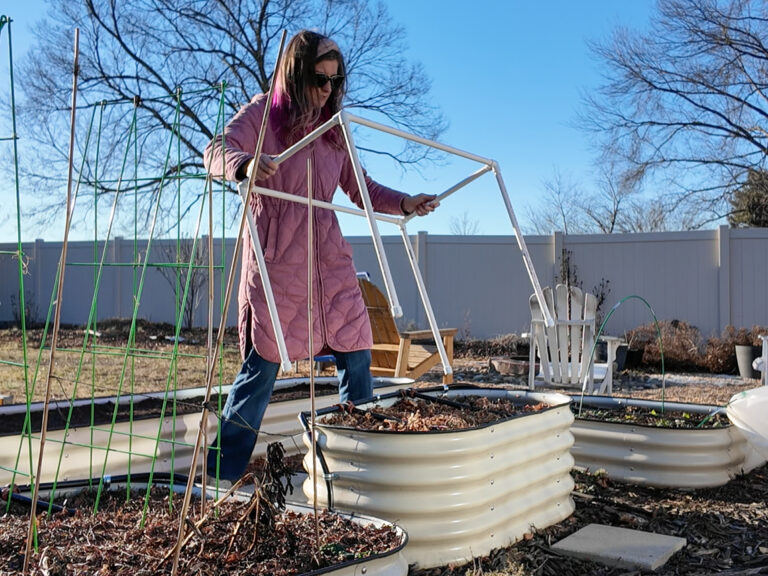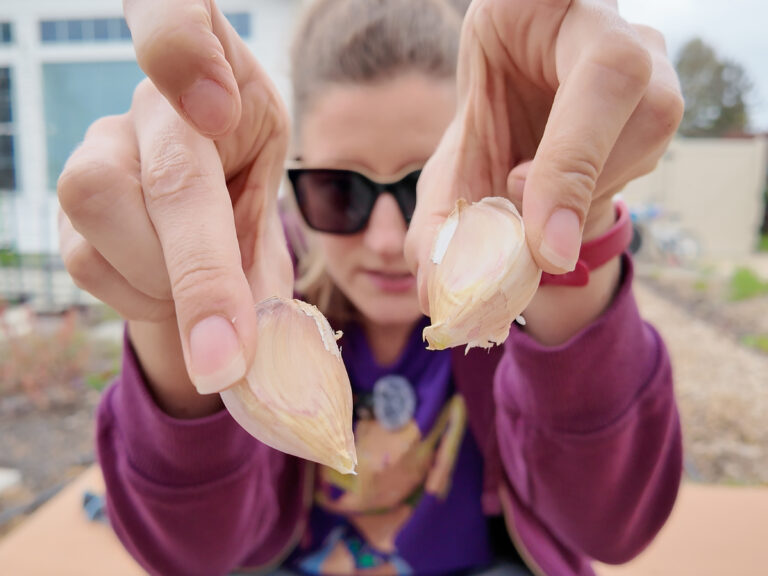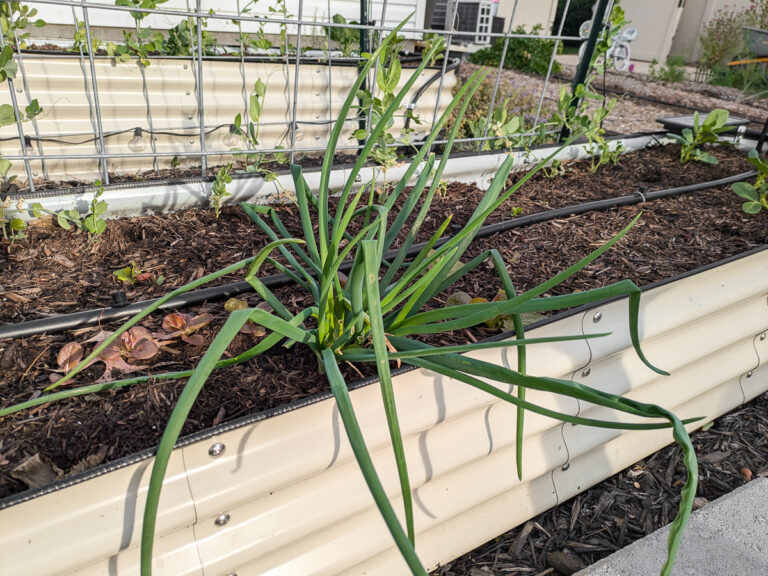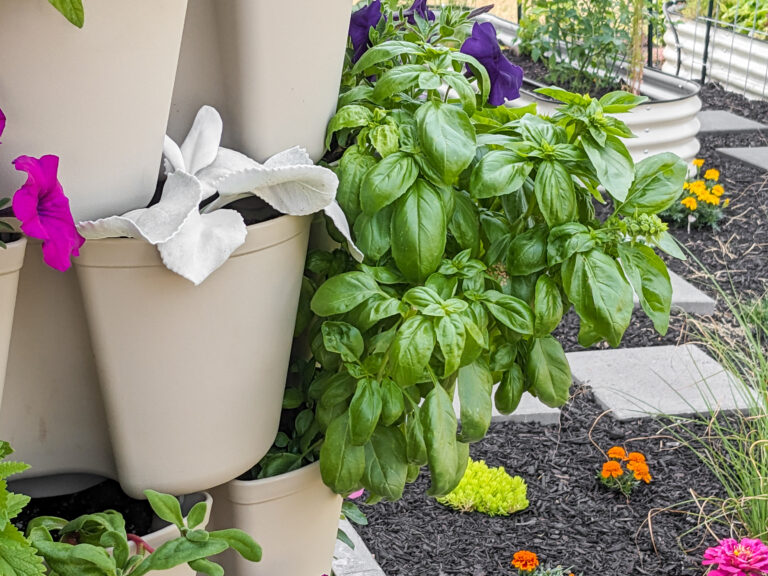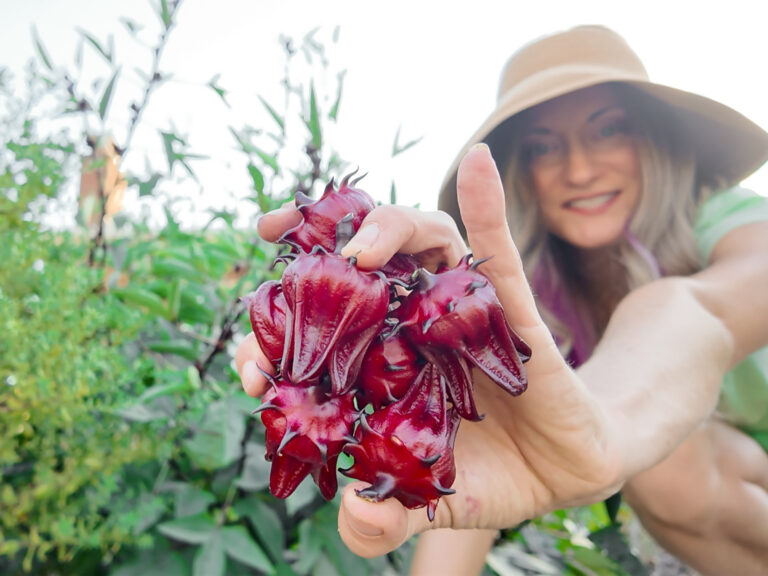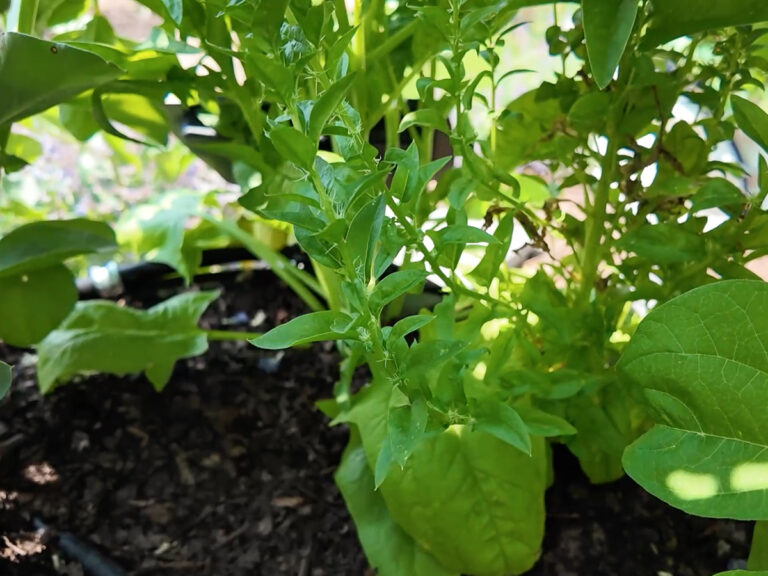Why I Love Growing Sage
One of my favorite perennials to grow in the garden is sage. I love the low-growing, mounding types that can spread slowly and fill in areas between other plants. These are great low-maintenance plants, too. And that’s always a win for my garden!
So let’s take a look at the reasons I love growing perennials sage in my garden and why I think you should grow it, too.
1. It requires very little maintenance
The types of sage I grow—and most varieties of sage, for that matter—require very little maintenance. Most of my perennials die off above the soil after the first frost. However, I leave that dead foliage standing over the winter to provide shelter for critters and insects over the winter.
In the spring, when I notice things are beginning to wake up, I simply cut back all of the dead foliage and throw it in the compost. The plant will resprout healthy now growth that will quickly fill in yucky-looking areas.
Below is an example of a plant that had just about made it through the winter (first pic). I did end up cutting back the green growth, too, since it was only healthy on the tips. This plant had completely filled out with new growth in just a few months (second pic below!).
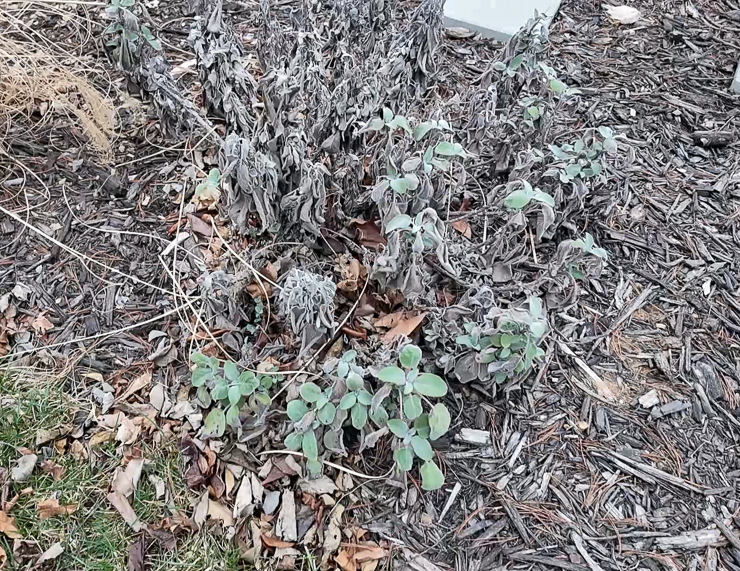
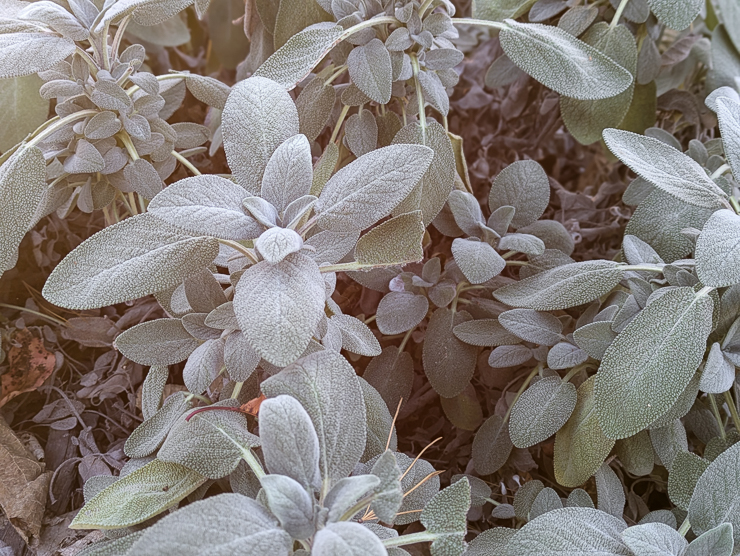
2. It is super reliable
The first reason I love growing perennial sage is that it’s low-maitenance and reliable. You’ll want to check that the variety you’re growing is perennial and cold-hardy in your grown zone, though. I’m in zone 7, and most varieties of sage seem to tolerate our cold winters quite well.
I have never lost a sage plant. In fact, I have propagated little sage starts and planted them in November…and they made it through the winter! Even covered in snow and battling through bitter cold stretches of weather like little champs. Below is an example of that—the propagation I planted in November and then that same plant the following July.
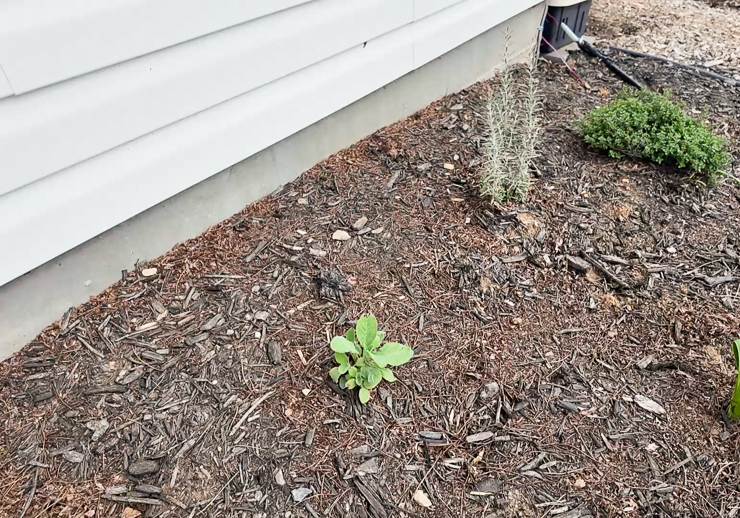

3. Critters generally leave it alone
We have groundhogs. We will never not have groundhogs. So far they stick to the back of our yard only…which is fine with me. We can coexist. But I don’t want them eating my plants, so I plant only things that they aren’t interested in in the back of the yard.
They don’t touch my sage. My first two sage plants in this yard were actually the ones I planted in the back. They were both $1 end-of-season clearance plants! And they have thrived over the years.
The strong scent from the sage leaves also can help to ward off pests in your vegetable garden. I have it planted around my raised beds to help put up a defense alongside my basil, dill, cilantro, nasturtium, and marigolds, which I plant annually.
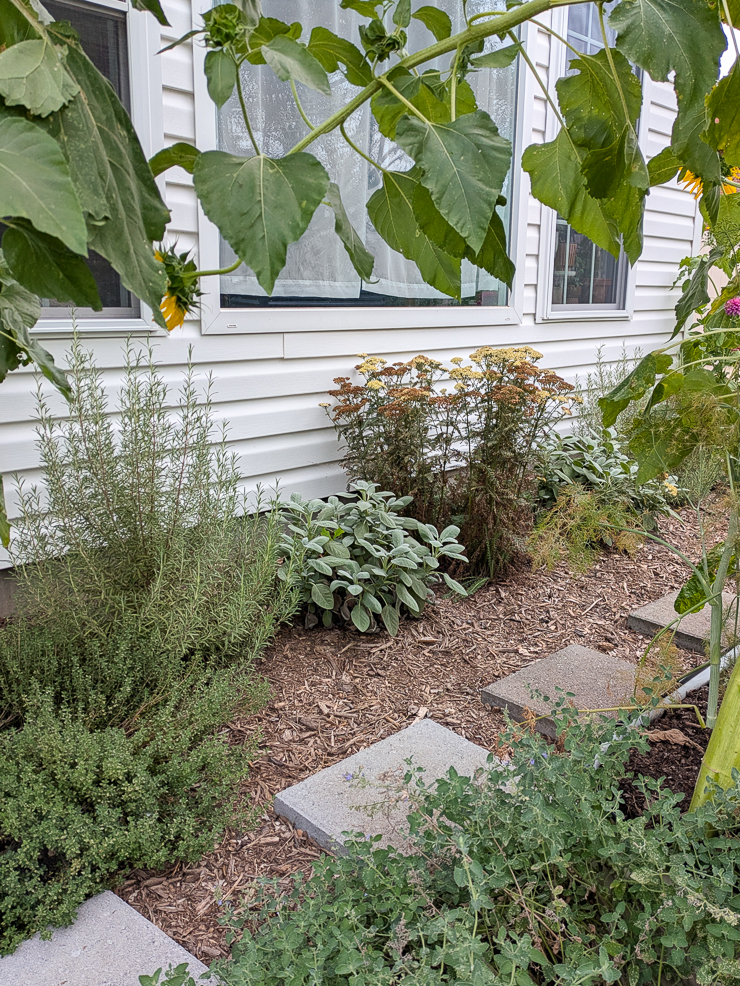
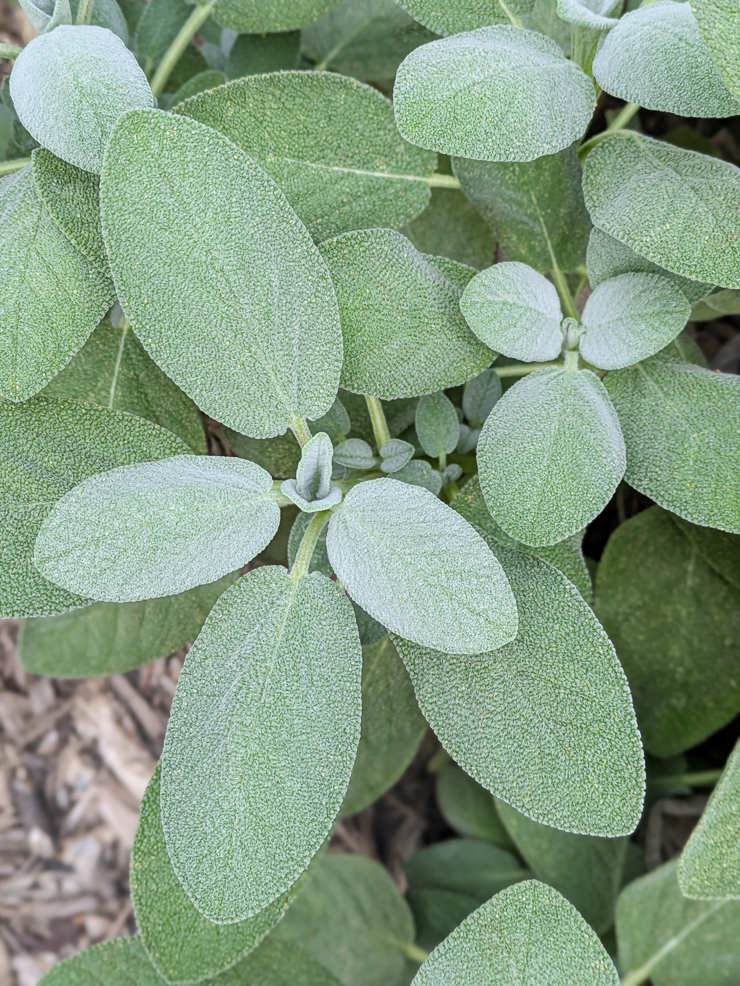
4. It makes a great groundcover
One of the best ways to prevent weeds is to mulch generously and cover empty ground. I like planting things like sage to help shade out weeds. Sure, it doesn’t work on bindweed, which is the bane of my existence in the garden. But it works great against other weeds.
And it also works great to fill in awkward spaces like you see below. I have sage planted in two spots around our pond where I want it to kind of start growing into and over the rocks.

5. It is easy to propagate
All of the sage in my yard came from my two $1 clearance plants I have in the back. I am constantly breaking off stems to root and plant elsewhere in the yard. I know sage isn’t expensive…but why buy it if you don’t have to?? Everything adds up when you’re addicted to gardening 🙂
I have a whole post about how to propagate sage. Below is a quick illustration of the process. Take a cutting and remove most of the leaves, leaving one or two sets of leaves. If you have it, dip the stem in rooting hormone and plant in well-draining soil.
Keep moist until the plant roots; don’t worry if some of the leaves turn brown and fall off. If you see new growth, your propagation is a success! Transplant elsewhere in your yard 🙂
